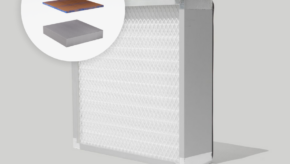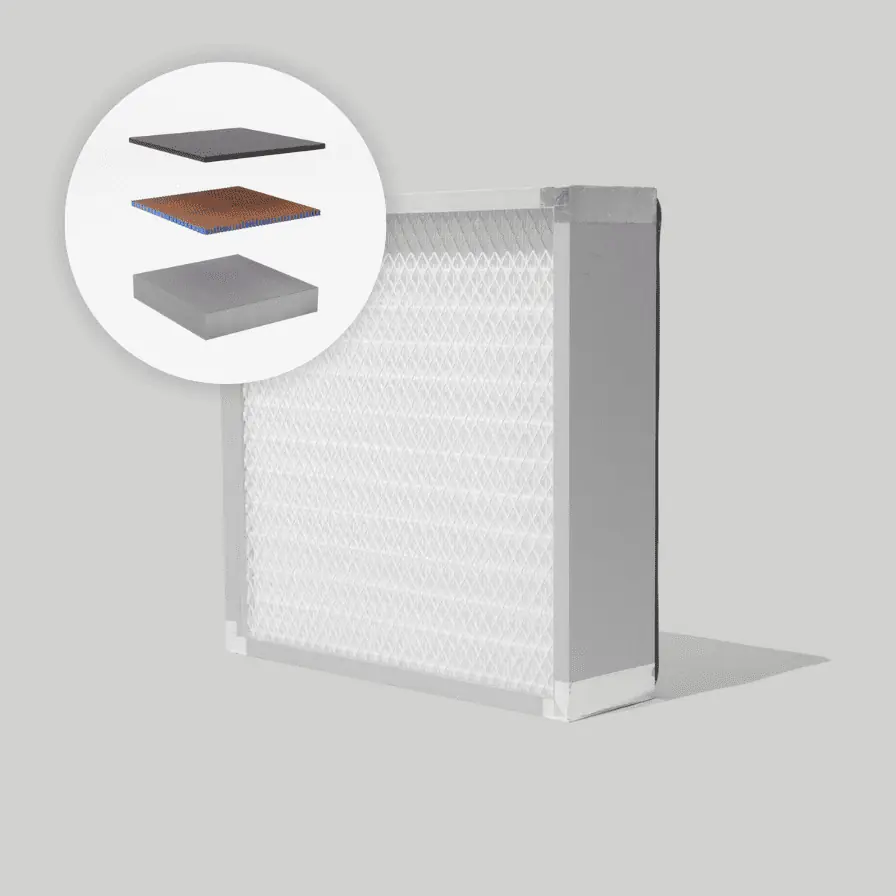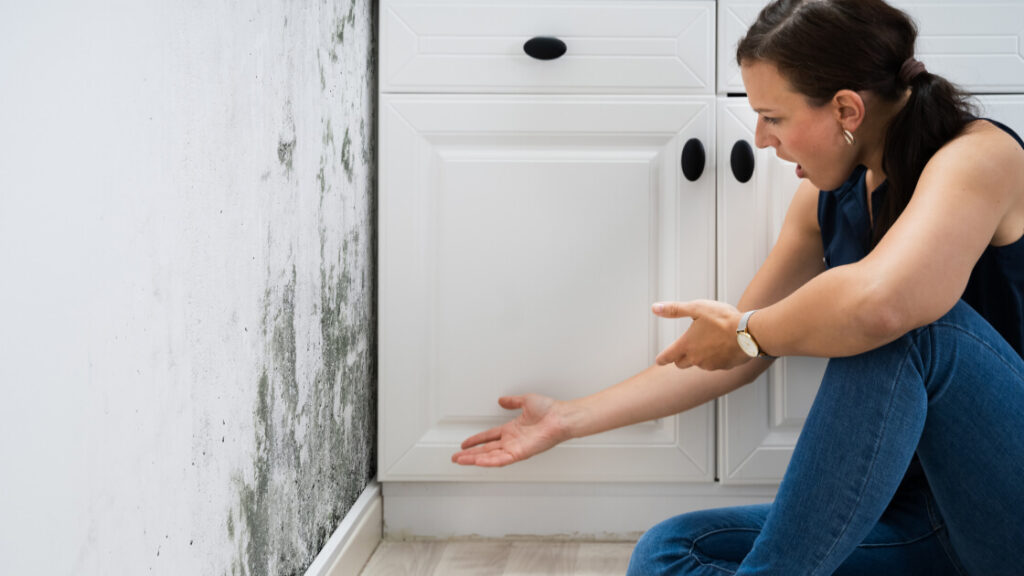Nothing is quite as ominous or destructive as the growth and development of mold within your personal indoor environments, such as your home or office buildings. A potentially hazardous, fast-growing, and unalarming fungal growth in your home, mold and its numerous different species will easily grow and rapidly spread throughout the entire environment/air space of a home without much attention. The first signs of mold growth in your home may include the noticeable discoloration that mold will leave on the various surfaces they grow on, another could be the moldy-like odor that the specific mold species produces into the air when spreading throughout the environments air space, or it may even be the start of unprovoked allergy-like symptoms that will start to take place whenever you become exposed to the mold and its spores inside your home.
The formation of mold inside of a home can vary in severity, depending on the specific species of mold that has developed within this environment and how fast the mold has spread throughout the airspace of the indoor area. Many of us have heard of various dangerous mold types such as the feared black mold (stachybotrys chartarum) and other labeled toxic molds. However, are there really toxic molds that grow indoors and how can these molds adversely impact both the indoor air quality in your home and the health of those occupants frequently exposed to this indoor air space?
In this article we are going to learn more about the dangerous types of mold that grow indoors, what classifies mold as toxic, and the best way to mitigate and remove mold and its spores from the air of your home or other indoor space.
What is Toxic Mold
To understand what toxic mold is, you will first need to recognize what mold is and how it forms inside your home. Mold is a type of fungus that grows in various environments, both indoors and outdoors. These organisms will thrive inside environments that have the optimal conditions needed for growth of these funguses such as moisture, oxygen, and darkness that will allow for the progression of the mold. However, the only most critical component to mold growth within an environment is moisture present – whether that comes from washing machine, cooking, air humidifiers, leaks, condensation build ups, or plumbing issues. As mold begins to form and grow it will start the process of releases small “spores” into the air, and according to the Mold Bacteria Facts the number of mold spores and fragments is usually higher indoors than it is outdoors. These mold spores that are produced into the air from growing mold fungi are so small that they can easily be inhaled/ingested into the human body, deep into the lungs. When these microscopic spores are inhaled into a person’s body it will pose risks of developing respiratory problems and other significant health symptoms.
Whereas, in relation to general mold fungus, the labeled toxic mold is a form of the fungi mold species that can produce toxic microscopic pollutants into the air that is classified to be significantly hazardous to human exposure. These toxic microscopic pollutants that are deemed to be hazardous from toxic mold are called mycotoxins. According to the World Health Organization (WHO), mycotoxins are naturally occurring toxins that are produced from certain mold species and will also be present in some foods. Several hundred different mycotoxins have been identified and that can be produced from these “toxic molds”.
How Many Types of Mold are There
When it comes to mold and the various different types of mold or mold species, guestimates are as close as you may come to determining exactly how many types of mold there are in the world. However, it has been reported that there are over 100,000 different types of mold that can be found in the environment. As we have discussed previously, not all types of mold are a threat but some of them can be fairly toxic when growing in the environment. Some of these species of mold will be classified as “toxic” species of mold, while other mold species are seemingly harmless when growing in your environment. Mold, depending on the species, can also contain different benefits such as in medicine for antibiotic treatment, some can be used in food to give a desirable taste or texture, and other molds can be used in manufacturing of products.
Although there are some benefits from mold and the different species of mold that exist in the environment, there are also some downfalls when it comes to identifying mold types in the home and determining which molds are dangerous when present in your home or other personal indoor environment. When it comes to mold that is growing inside your home it will likely be impossible to identify which type of household mold is growing without the help of a trained professional. Therefore, any form of mold growing in your home can become costly when it comes to testing and remediating the specific mold species from the indoor environment.
Have you ever noticed that mold can grow in a variety of colors on the surfaces inside your home? Color is one of the key attributes to determining the different types of mold species that are possibly growing within your home’s indoor space. When it comes to mold and the various colors that each species of mold will take on when growing on surfaces, there will be several factors that will play a factor in the color it takes on such as the region the mold is growing in, the mold defense mechanism it takes on to blend into the environment, and even the age of the mold.
The color of mold will be impacted by the region it is growing in, with molds that grow in the Pacific Northwest having more blue mold or green mold, the Amazon having a lot of orange mold, etc. Additionally, mold will adopt a certain color as a defense mechanism to allow the mold to blend into the environment and on surfaces. Lastly, the age of the mold will also impact the color as the chemicals in the mold will alter the color.
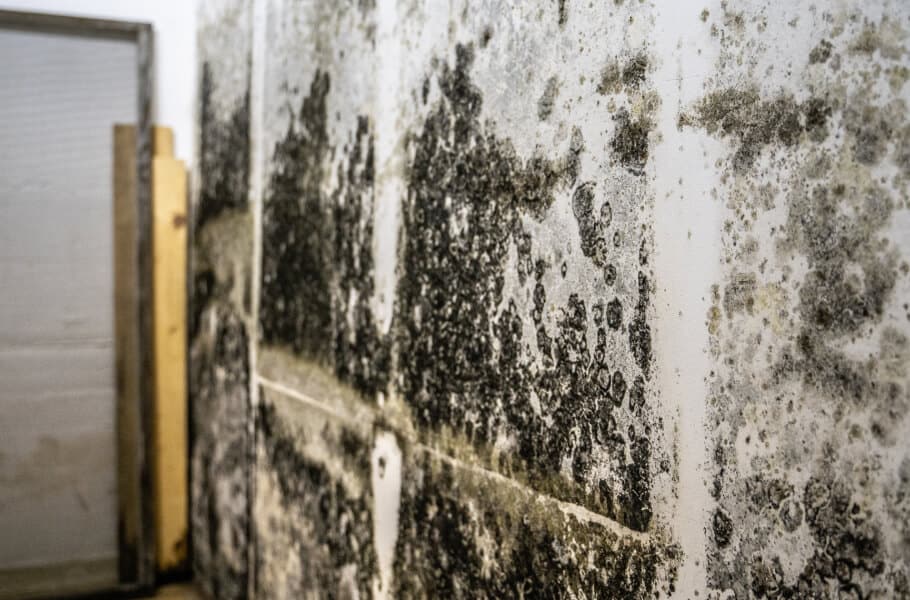
Is All Mold Toxic?
Mold and its 100,000’s of species will all have various impacts on the environment that they are growing in, especially inside of a home, as well as the adverse health effects that the mold can potentially elicit when exposure occurs to occupants. When it comes to mold, not all molds are made equally – with some of them containing dangerous components or spores and others producing fewer/none threatening components into the environment. Thus, that is why some molds are labeled as toxic mold and others are not when growing either indoors or outdoors. When it comes to determining mold that is considered “toxic”, one of the first molds that come to most people’s head is the dreaded “toxic black mold”.
Toxic black mold (also known as stachybotrys chartarum) is the most commonly known name of toxic mold among the public. This type of mold gained its name from the characteristic black color it takes on when growing on surfaces. However, when it comes to dangerous types of mold that can grow indoors, the list does not begin and end at black mold.
Types of Toxic Mold Indoors
The household molds that are freely able to grow within the indoor space of a home will include certain mold species that are capable of growing inside a space with these specific conditions, and some of these mold species will be categorized as “toxic”. Some of the most toxic types of household molds that can grow indoors will include the notorious Black Mold (Stachybotrys chartarum), Chaetomium, Aspergillus, Penicillium, Fusarium, and Alternaria – and all of these molds will interact differently when growing inside your indoor environment. What makes all of these various species of mold toxic and what negative effects do they produce into the indoor space?
- Alternaria: A known allergy-causing mold species, Alternaria is a type of mold that can be present in high amounts in many climate zones during both the spring and the summer. This type of mold is usually found growing in carpeting, inside walls, showers, attics, and basements. Alternaria will produce mycotoxins into the air which can be hazardous to human health upon exposure.
- Fusarium: Fusarium is a type of mold that is commonly found in plant debris and soil but can also be found in a home. Home’s that have moisture intrusions present within them are primary candidates for fusarium mold growth. When this species of mold grows on the surfaces in your home it cannot only cause damage to the surfaces and structure of the home, but it will also have potential health effects. In rare cases, a serious eye infection called fusarium keratitis can be the result of exposure to this mold.
- Penicillium: There are many different species of penicillium mold, some beneficial and some harmful when growing inside your home. Penicillium is used in medicine and in cheeses, but when it is growing inside your home it can exacerbate allergy-like symptoms and respiratory problems.
- Aspergillus: The Aspergillus household mold is a toxic species of mold that will produce toxic compounds such as aflatoxins, a class 1 carcinogen produced by strains of Aspergillus flavus and Aspergillus parasiticus. The spores that are released from Aspergillus mold can make breathing the contaminated air in your home difficult, especially for those with compromised immune systems.
- Chaetomium: One of the most commonly found mold in homes, Chaetomium mold will be present near water damage due to its ability to thrive in moisture environments. This type of mold is fairly similar to black mold and will sometimes even share the same areas with this mold. It will elicit symptoms such as watery eyes, difficulty breathing, etc.
- Stachybotrys Chartarum: The feared black mold, stachybotrys chartarum is one of the most dangerous types of mold that can cause flu-like symptoms, diarrhea, headaches, memory loss, and severe respiratory damage.
What Happens When You Inhale Mold
Can mold make you sick? The inhalation or ingestion of mold and its toxic substance/spores that are produced into the air can lead to a domino effect of health problems and symptoms, especially when dealing with “toxic” molds. These toxic molds, as we discussed earlier, will produce toxic substances known as mycotoxins that can be hazardous when exposure occurs. Is mold dangerous? Typically, however, most molds are not dangerous, rather the substances that some of them produce can be dangerous to human health. When mold is produced and growing in the indoor environment of a home, usually it will elicit allergy-like symptoms in most cases that will include sneezing, coughing, watery eyes, and other respiratory problems.
Allergic responses to mold are the most common health effects that are stirred from mold exposure, and those people who suffer from allergies and/or asthma are more susceptible to acquiring these problems from mold. These reactions may come on immediately upon exposure or it can take a certain amount of time after exposure to begin, according to Medicine Net.
How to Remove Mold Spores in Air of a Home
Mold spores can form wherever mold grows, whether it be indoors or outdoors, and these microscopic spores can be fairly hazardous when it comes to human exposure, particularly in an indoor environment. When mold spores are produced and travel throughout the air of a home, it will allow for the rapid spreading of mold that will allow for the mold to grow aggressively. However, in between the traveling of these mold spores into the air and onto a surface, the occupants that are spend a large amount of time in this environment will be susceptible to inhaling/ingesting these spores. When it comes to remediating mold from your home, the best method to enact will be to call for the help of a mold remediation specialist.
Mold remediation specialists are trained professionals that are capable of effectively and safely removing mold from the surfaces of your home. The general rule of thumb is if the mold covers more than 10 square feet than a mold remediation specialist is needed. These professionals will tape off the areas that are tainted by mold and work to completely remove it without spreading the spores into other areas. However, after you have remediated the mold in your home it may be necessary to have air quality solutions placed within this space to help remove mold spores from the air of your home.
Air Purifier for Mold
Air purifiers are devices that are designed to clean the indoor air of a space by pulling the air into different filtration technologies used in each specific air purification device used. Depending on the air purifier and the technology that this air purifier uses to remediate the indoor air quality, some of these technologies will provide the capability to remove mold’s spores from the air. The EnviroKlenz UV Air Purifier is an effective air purifier that combines Advanced EnviroKlenz technology for toxic and noxious chemical and odor removal with HEPA filtration and ultraviolet germicidal radiation (UVC) to remove airborne particulates and allergens and inhibit the growth of captured microorganisms including mold spores, bacteria, and viruses.
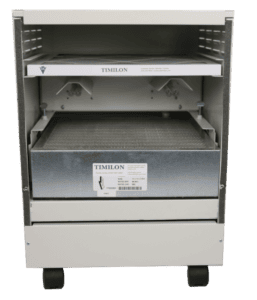
The design of the EnviroKlenz UV Air Purifier allows the filtration device the capability for toxic VOCs to be neutralized that may be produced from the mold and its spores, while also containing a hospital-grade HEPA filter for the ability to capture those fine particulate matter than are larger than 0.3 microns in size from the air, this will include those microscopic reproductive spores emitted from mold. As the mold spores become collected on the collection media of the HEPA filter, positioned above this filter are two UV-C lights that are safely within the safe wavelength levels that won’t produce ozone but will have the capability of shining on microorganisms like mold spores to destroy them on the collection surface. Therefore, allowing the EnviroKlenz Air Purifier to be both a safe and effective solution for airborne mold spore removal in a home where mold has been found growing and thriving.
Article Sources:

